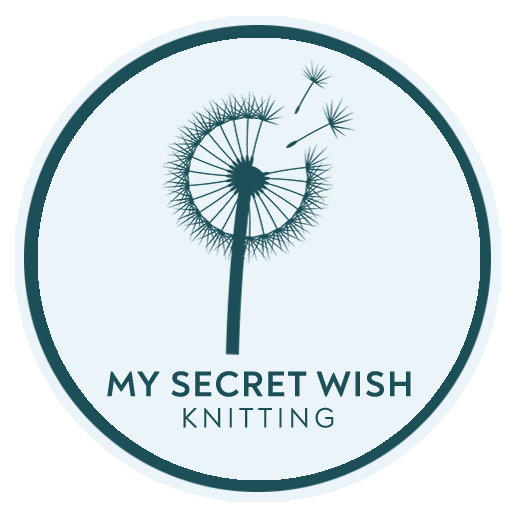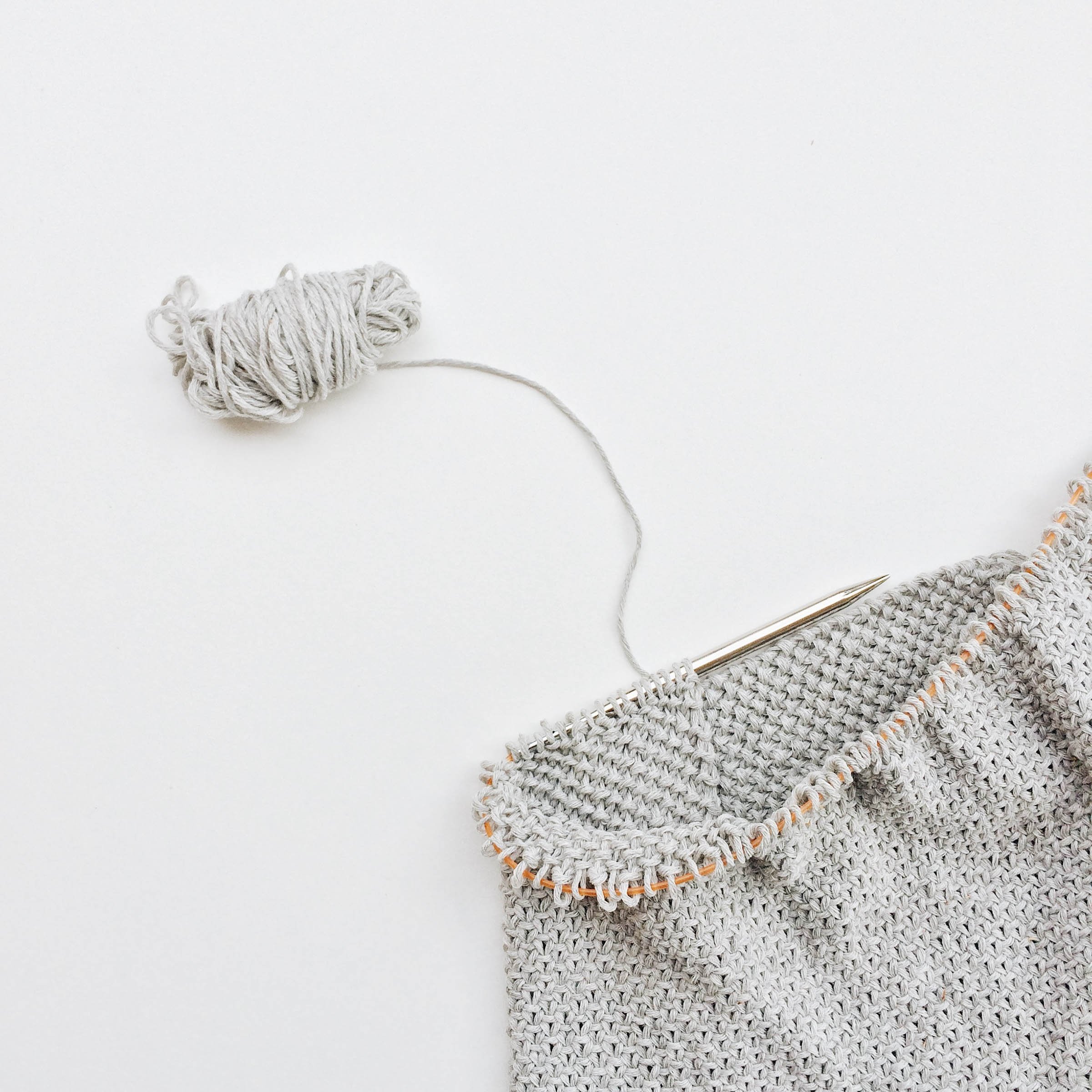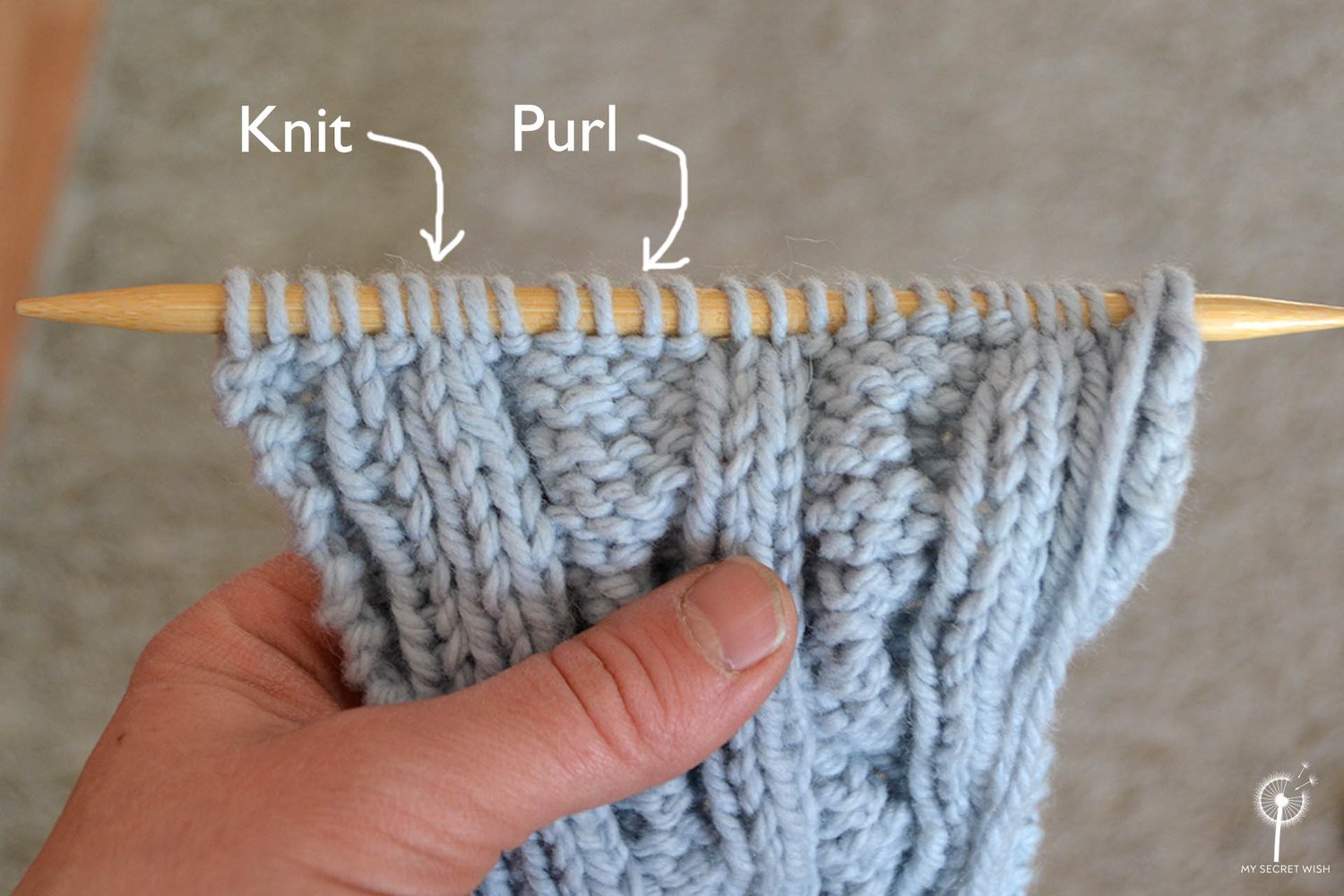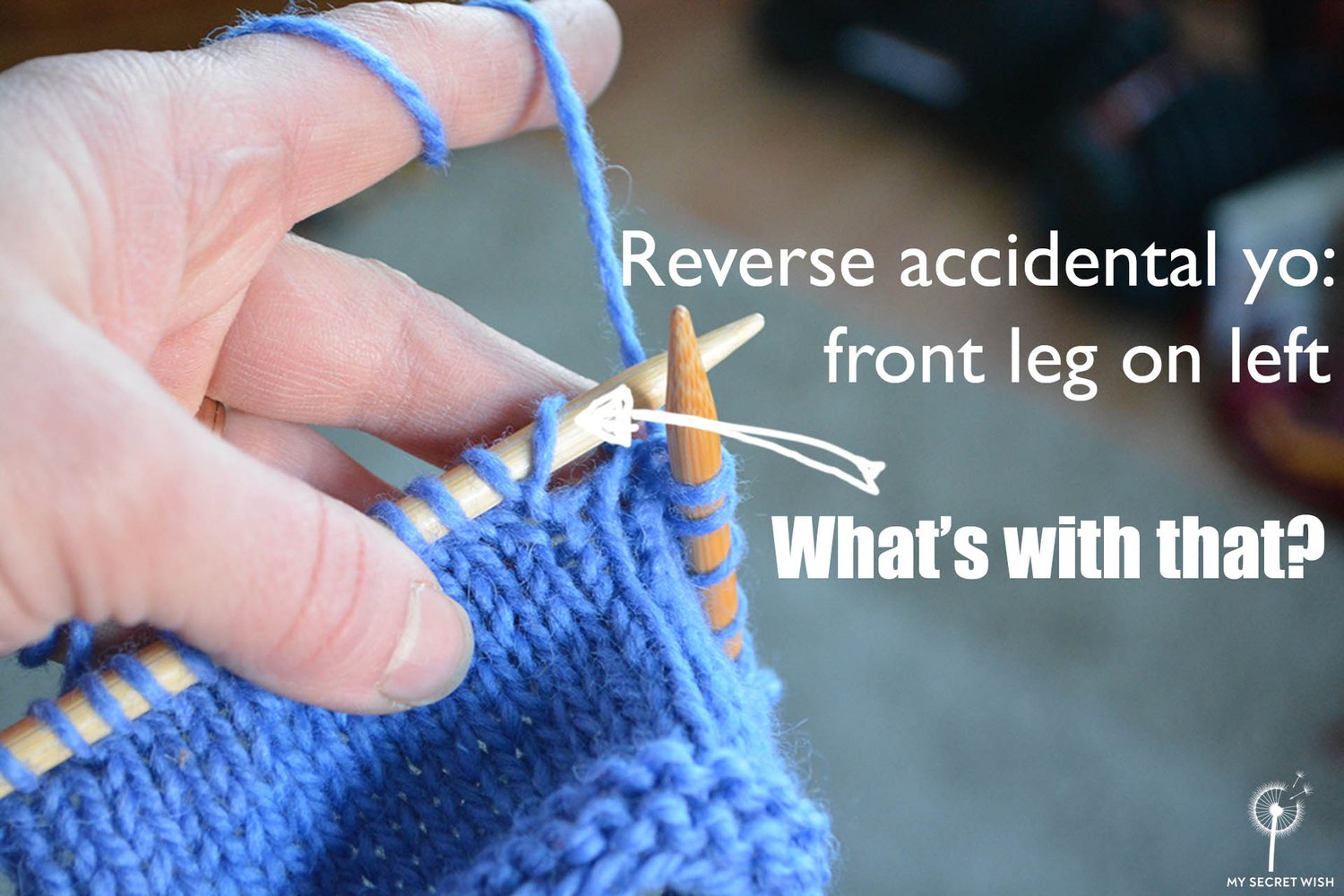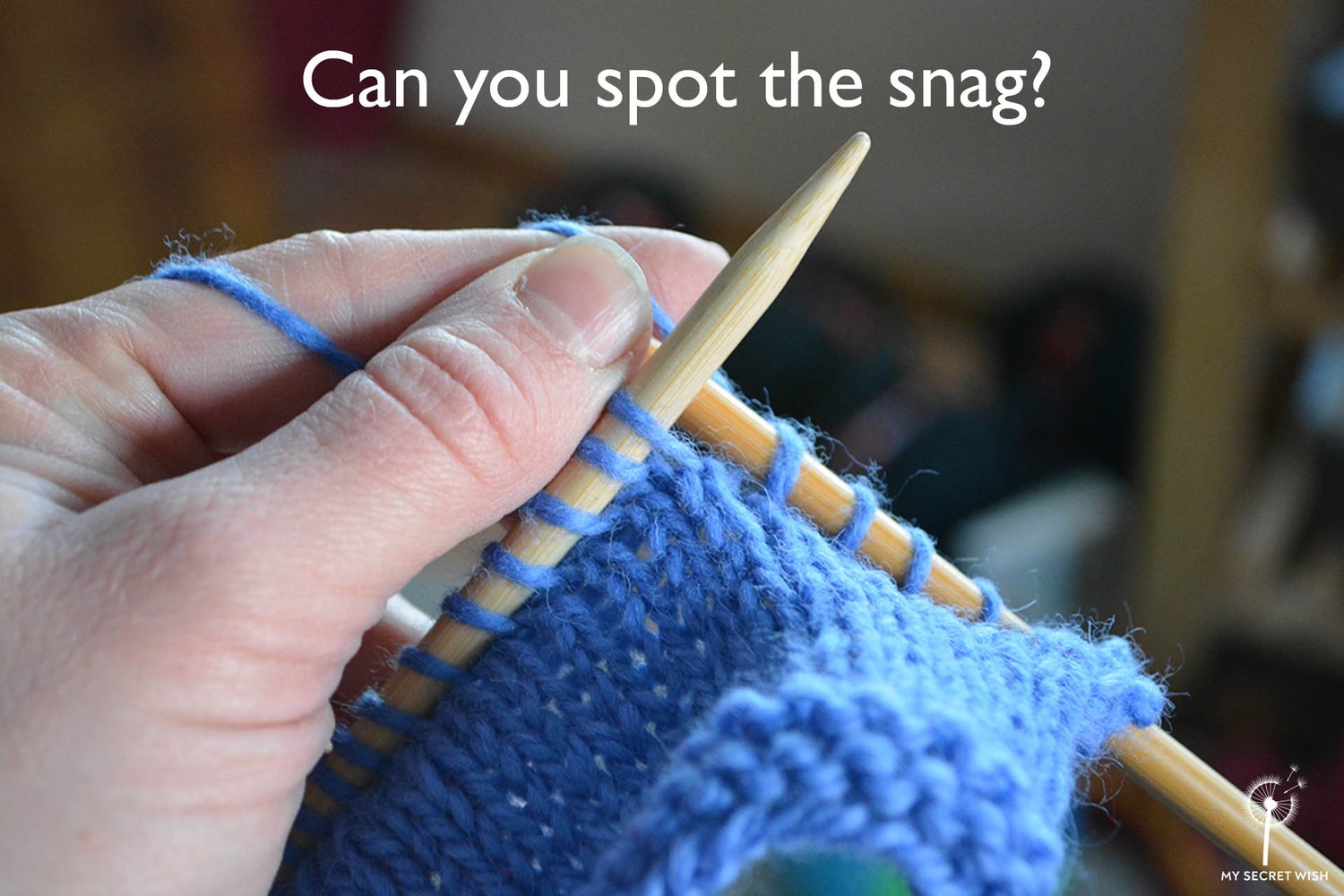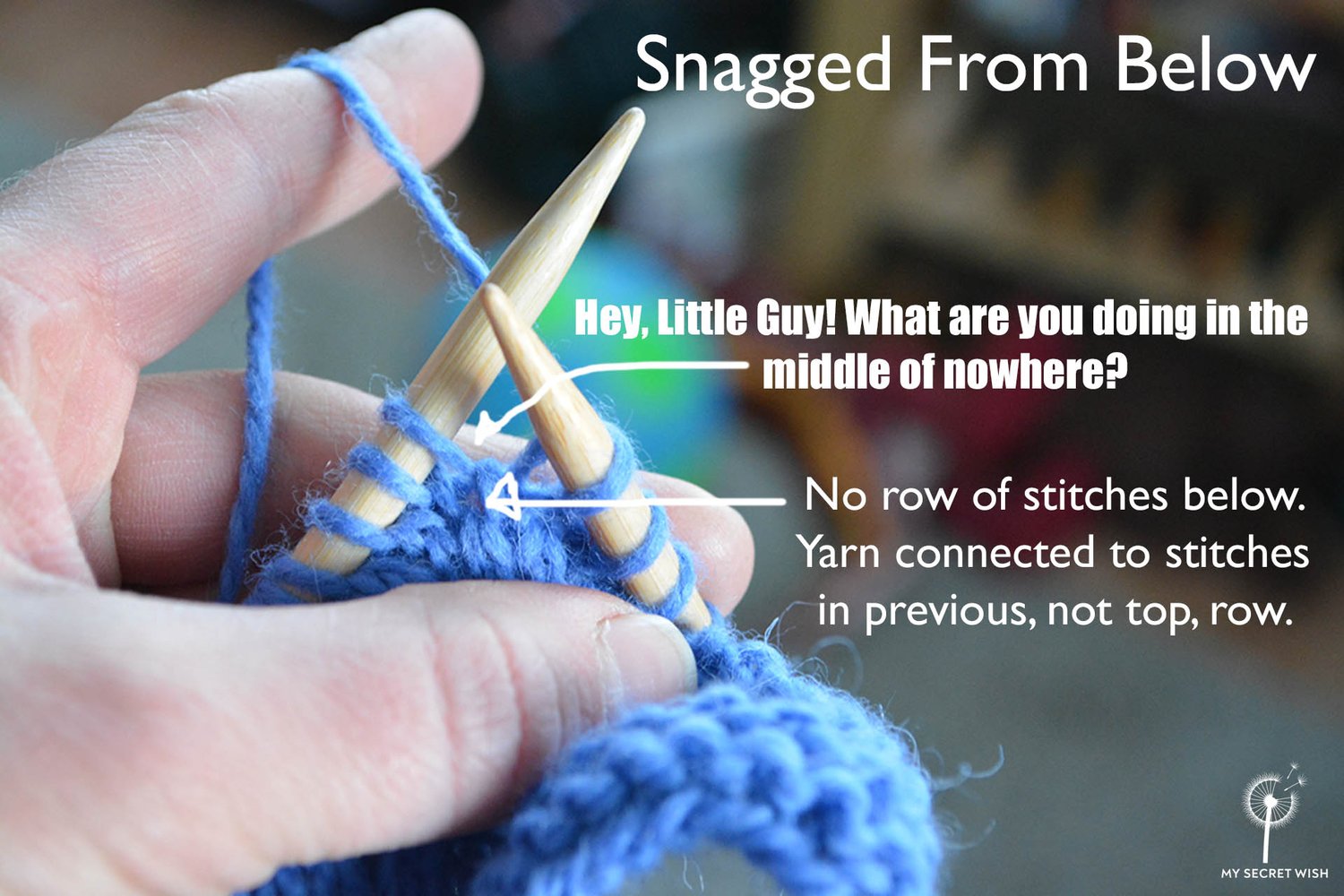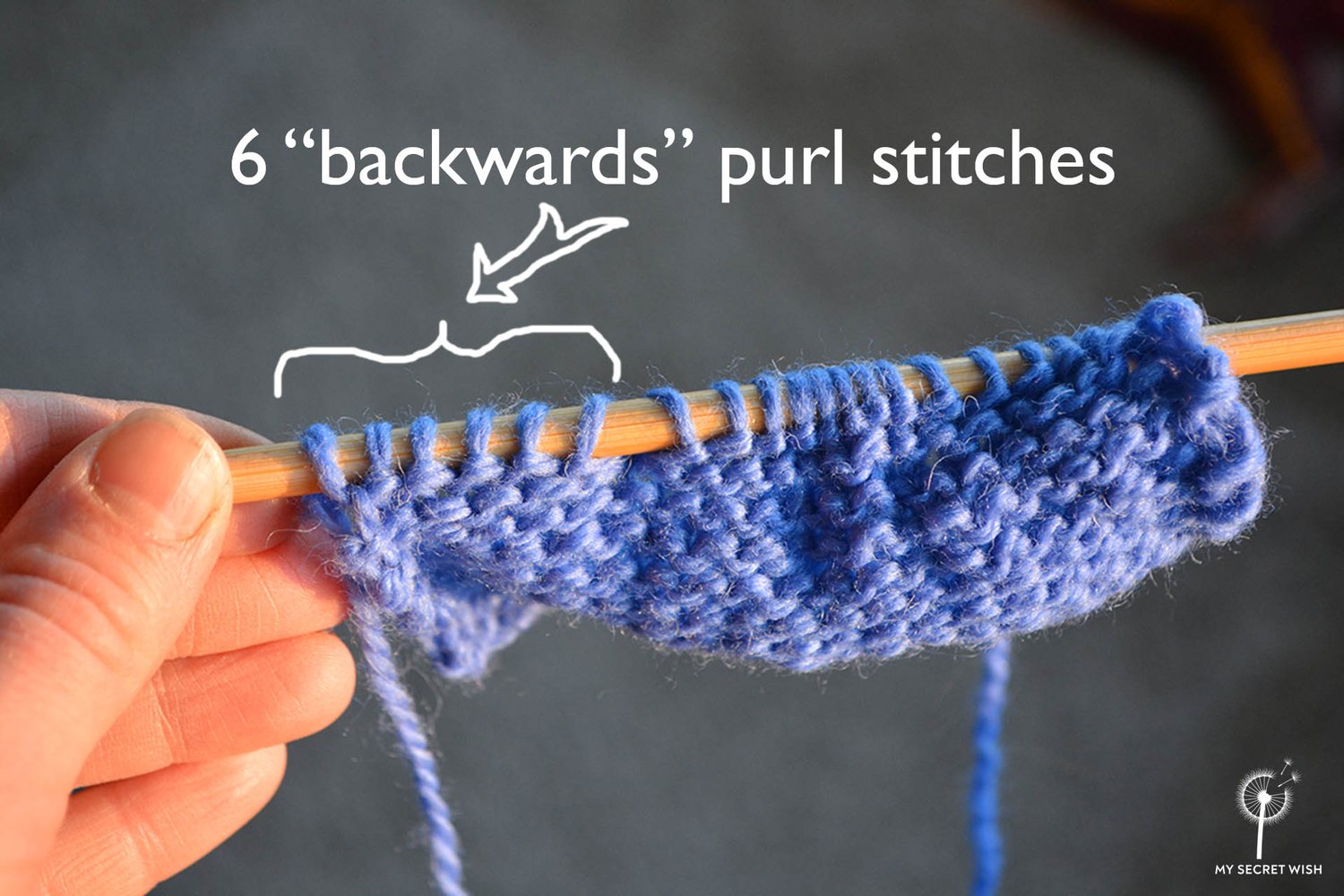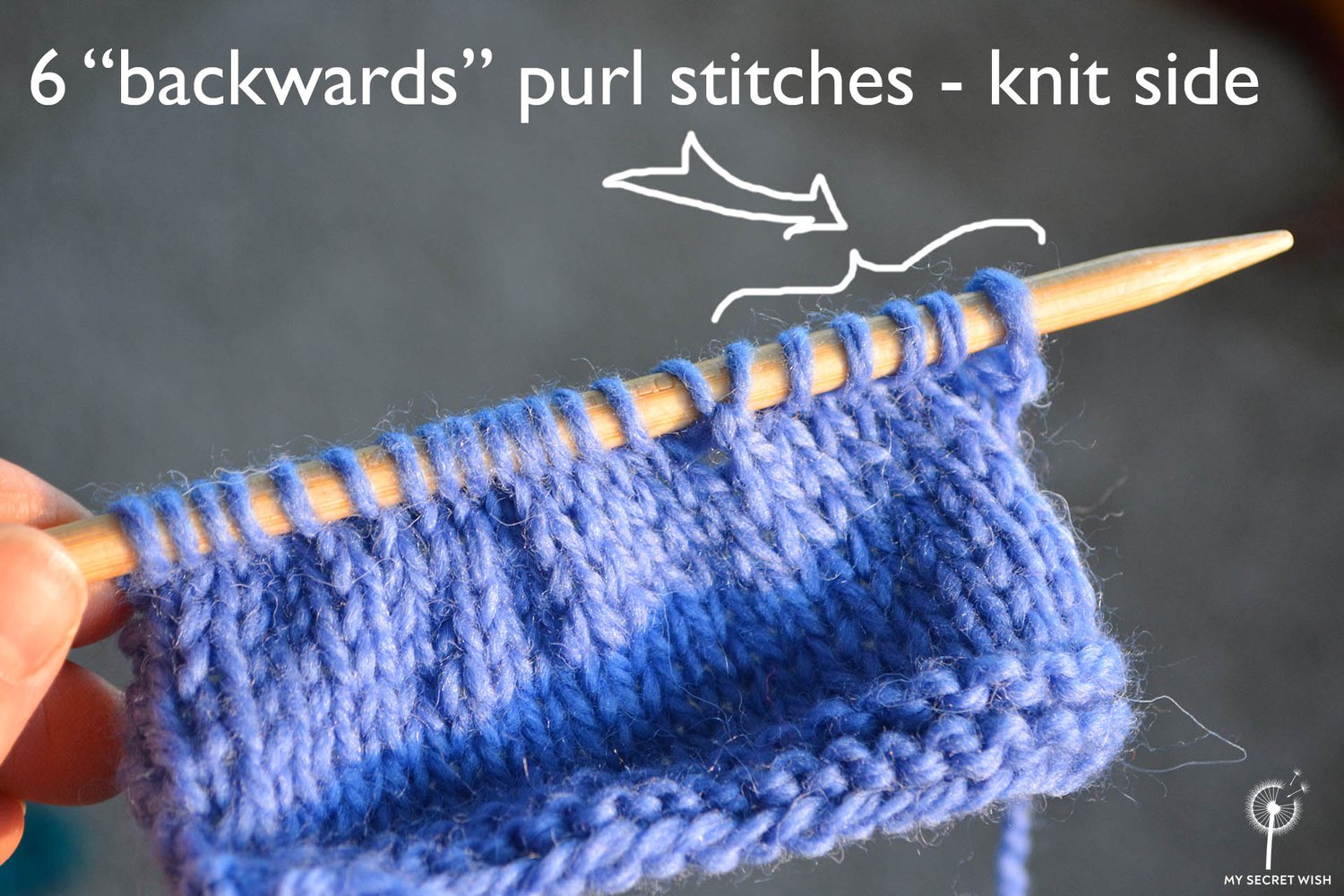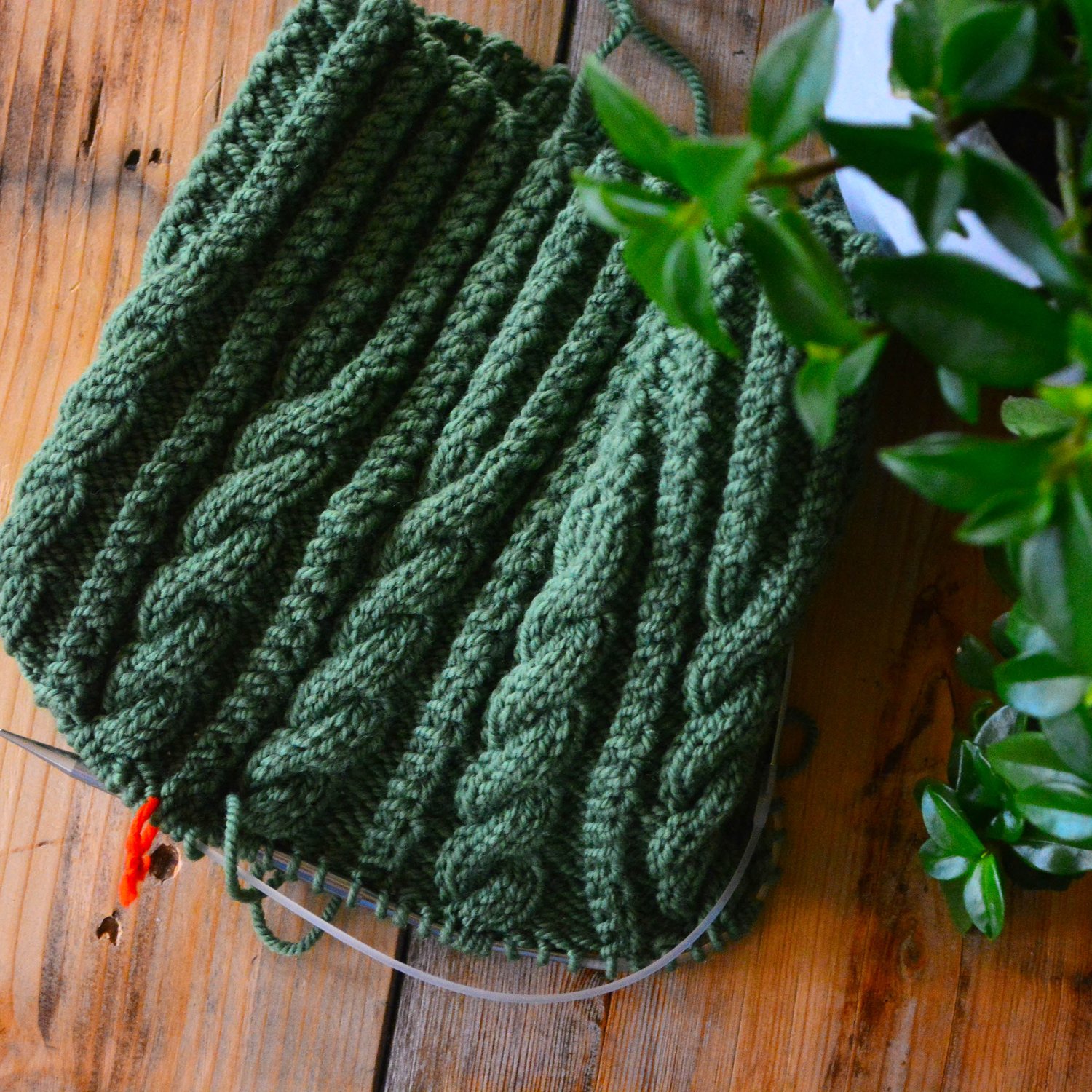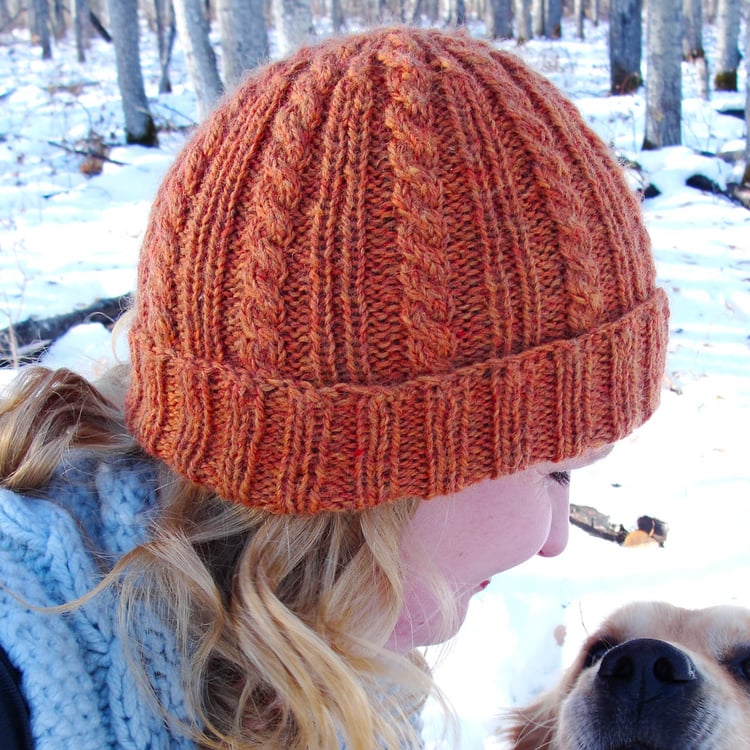How it looks: When you look at your work, you notice a column of stitches that abruptly ends for no reason or is coming undone
Cause: You dropped a stitch from the needle at some point
This faux pas is usually noticed in one of two ways:
- You count your stitches and realize you have less than you should.
- You are looking over your work and notice a small loop sticking out of the fabric several rows or inches down at the top of a column of stitches wedged between two others.
- Alternatively, you may have a long “run” of stitches that are loosening into a ladder between columns.
How to Fix It:
Sadly, while dropping stitches is easy to do, fixing them is less easy.
The most important first step when you notice a dropped stitch is to prevent it from running any further. Do this by grabbing the stitch, then putting something through it to prevent further deterioration while you fix the problem. A crochet hook, cable needle, or rigid stitch marker work well for this.
From there, the fix depends on how bad it is.
For a stitch you just dropped, the easiest solution is to simply pick the stitch up and place it back on the needle. (Make sure your stitch is laying the right way! See the next section for more on that.)
For a running column of dropped stitches, use a crochet hook to re-create the column, starting from the first intact stitch. (This only works if you’re looking at an unshaped piece of stockinette fabric.)
Stretch the work a little so you can see which of the yarns in the ladder belong to which row, then, from the knit side of the work, create a chain of stitches until you get back up to the working needle and replace the last stitch on the needle.
For a “disappearing” column of stitches, you could try the same technique, but this will mess up your tension and that section of the work will appear puckered. Sadly, the best fix is usually to rip your work back to the dropped stitch and pick it up, then go from there.
